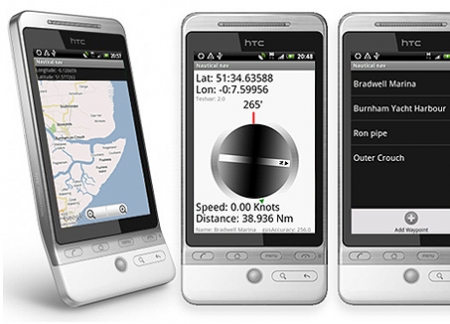
It is a small munition, just 5 kilograms, and is designed to be fired from the widely used 76mm naval cannon, but designers in Italy think it is big enough to shake up the rules of naval warfare.
The secret to Oto Melara's Vulcano 76 new munition is moveable fins, or canards, and GPS to hit targets with precision up to 40 kilometers away, doubling the range of standard,
nonprecision 76mm gun munitions.And that, the designers argue, will allow any of the 55 navies that use the 76mm gun to punch above their weight and become viable providers of precision naval fire support, from a safe range, as littoral operations become increasingly frequent.
"We looked at how many littoral ships already have the 76mm gun and estimate that there are 300 guns which could be eligible for this technology in the next 10 years," said Massimo Gualco, Oto Melara's head of naval systems, launchers and ammunition.
For CEO Carlo Iardella, the new munition will also boost sales of the 76mm, which has long been a steady seller for Oto Melara.
The La Spezia-based unit of Italy's Finmeccanica has long been developing guided munitions, whose canards are protected in the gun barrel by a jacket, or sabot, which falls away from the munition in flight. The firm has already developed the Strales system for the 76mm gun, which uses a beam-riding system connected to the ship's radar to guide a munition against incoming missiles, small vessels or aircraft.
For its larger 127mm naval guns and 155mm land cannons, Oto Melara is already working on the Vulcano system, which will use GPS, inertial navigation and an infrared sensor to hit targets with precision 100 kilometers away.
The novelty is that Oto Melara now wants to apply its 200 million euro ($271.9 million) research and development investment in the Vulcano concept to the smaller and more common 76mm gun, handing a naval gun support role to the smaller vessels that find themselves most often in littoral areas.
"We have long supported this idea, and now the progress on the 127mm Vulcano program has allowed it," said Gualco.
The ballistic Vulcano munition flies farther than a conventional munition for two reasons: Its narrower body - after it sheds its sabot - makes it more aerodynamic than a standard-caliber munition, albeit at the cost of losing explosive potential. Then, as the munition begins its descent to the target, the canards can be angled to elongate the descent as well as provide lateral movement as the GPS guides it to target.
The Vulcano 76, which Oto Melara plans to have ready by 2015, is designed for use on both the 76mm Compact and the newer 76mm Super Rapid guns the company has sold. While this requires limited on-board conversion work, it has a firing rate of 80 rounds per minute.
Gualco said that the new technology would help 76mm guns fulfill a role they were already being called on to perform.
"We knew that the 76mm guns had in any case been used for ground support, despite doctrine reserving this role for 127mm and 155mm guns," Gualco said.
Extending the gun's range allows vessels on coastal duties to put more distance between themselves and enemies ashore, said Gualco, citing the HMS Liverpool, a destroyer which came under rocket attack off the Libyan coast during operations in August.
"The munition will be complementary to airborne precision bombs," said Iardella.
Naval Targets
Also envisaged for hitting naval targets, a company video shows the munition crippling enemy vehicles and knocking out the engine of a vessel. Oto Melara is also working to give the munition laser targeting.
An Italian industrial source said the Vulcano 76 munition would cost between $30,000 and $40,000 - "far, far less than an equivalent missile."
The company is also planning an unguided version of the munition, featuring a sabot and the same aerodynamic body as the guided version, yielding a 30-kilometer range that is still greater than the standard 76mm munition on the market but falls 10 kilometers short of the guided version.
The new products will come equipped with fuzes that can be programmed to activate just before impact above the target- showering the target with fragments - or just after impact, meaning the explosion takes place after armor has been pierced.
An ammunition programmer in the cannon requires half a second to provide instructions to the fuze and give the GPS coordinates to the munition before firing, said Marco Brogi, Oto Melara's head of research and development.
After providing funding for the Vulcano munition for Oto Melara's 127mm and 155mm land-based gun, the Italian government is close to funding research on the Vulcano 76 program, an Italian naval source said.
Development of the 127mm and 155mm Vulcano program, meanwhile, proceeds following a guided 50-kilometer firing in March 2010. The system will be used on Italy's two general-purpose FREMM frigates, while Germany has ordered the Vulcano kit for the 127mm guns on its new frigates, although no munitions yet.
Oto Melara's other guided munition system, Strales has been acquired by Italy for use on its FREMM frigates and Cavour carrier, while a contract is due to be signed soon to put the system on board Italy's two Horizon-class frigates, the naval source said.
Colombia has signed to become the first export customer for the system, with four systems already delivered and munitions to follow.
As it introduces the Strales munition, known as Dart, the Vulcano 76 guided munition as well as the unguided version for its 76/62 gun, Oto Melara has also developed a loader capable of holding up to four different munition types in the same cannon, able to feed any type on demand.

No comments:
Post a Comment